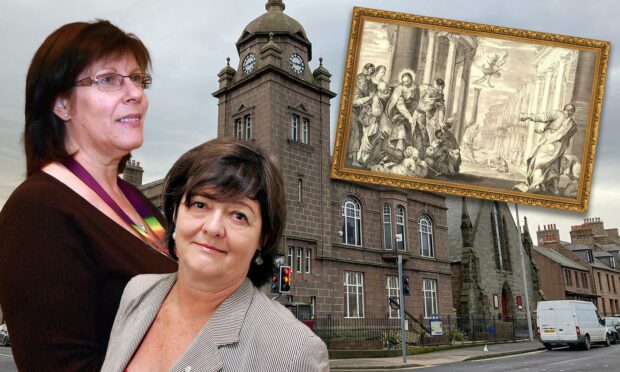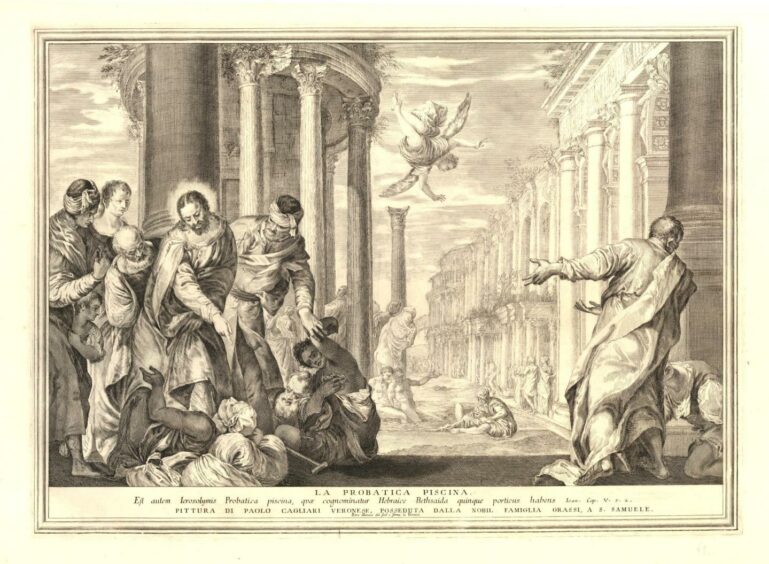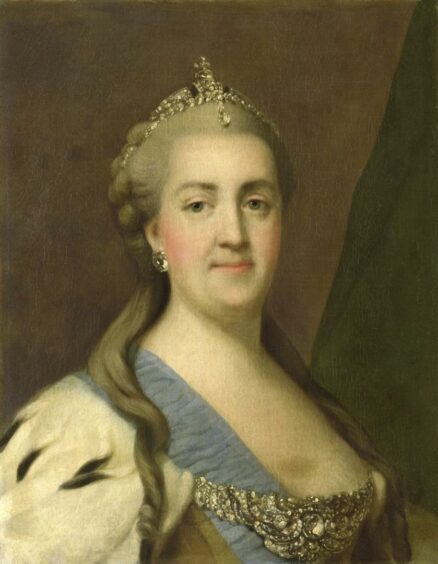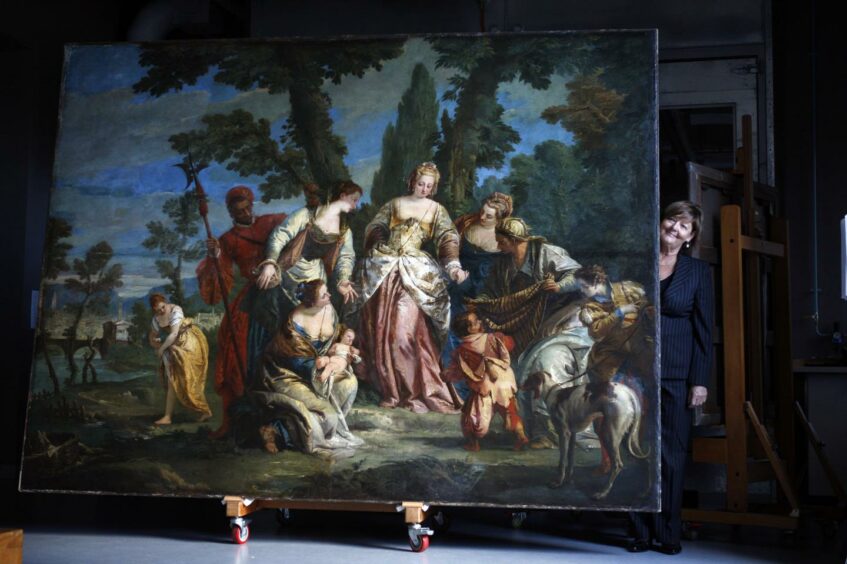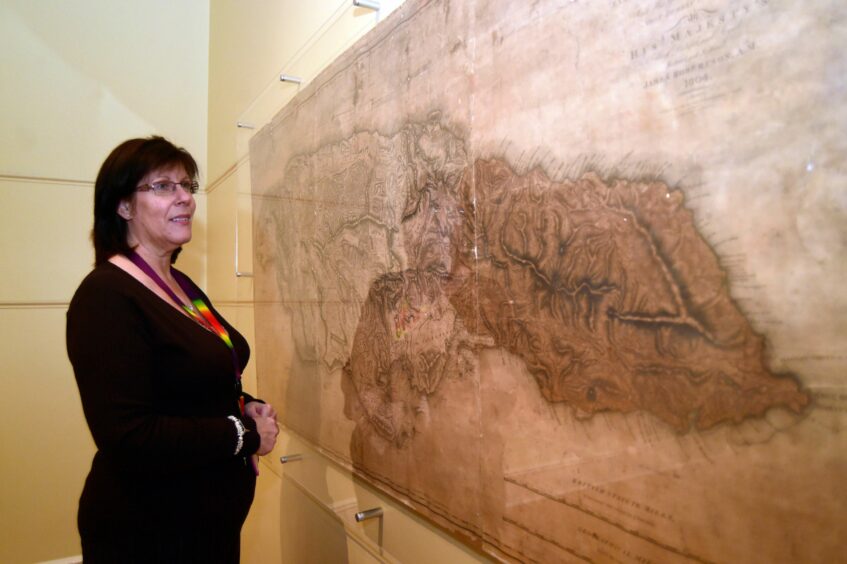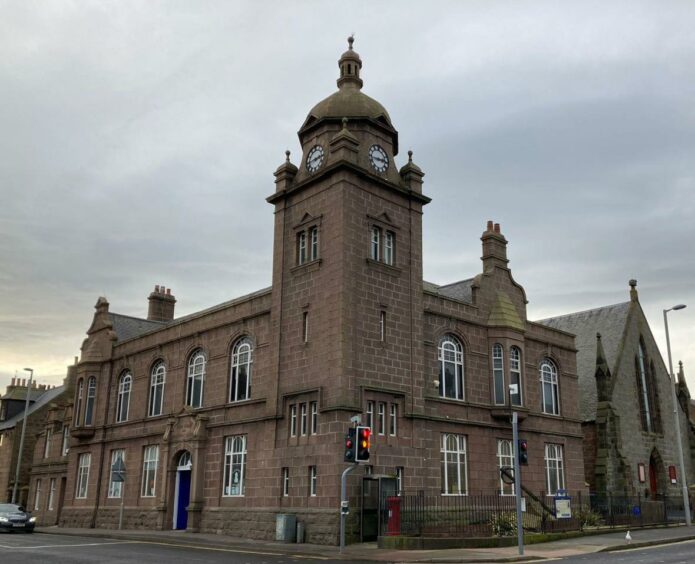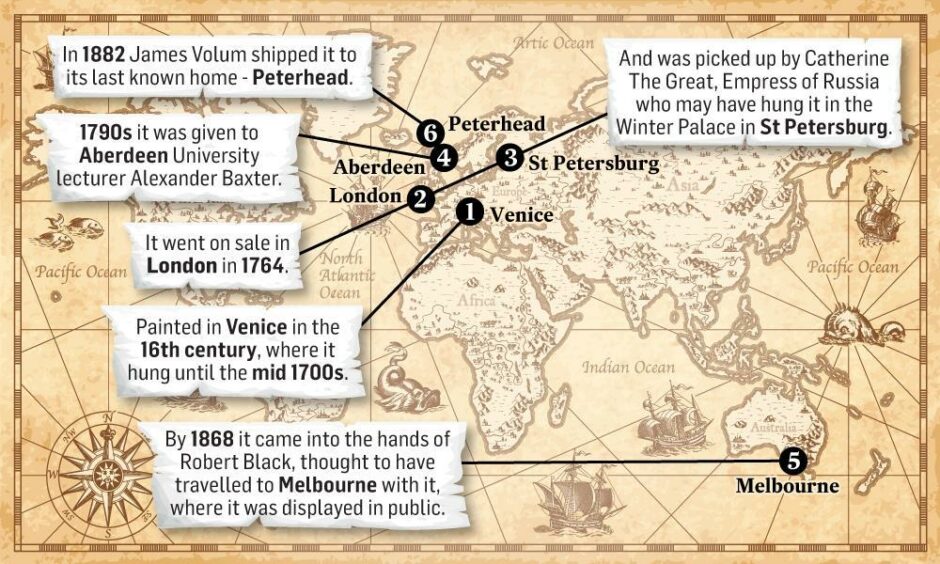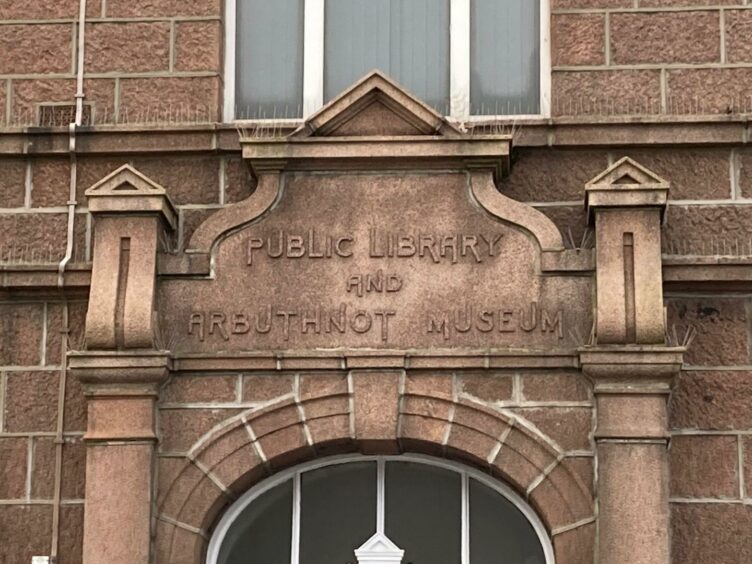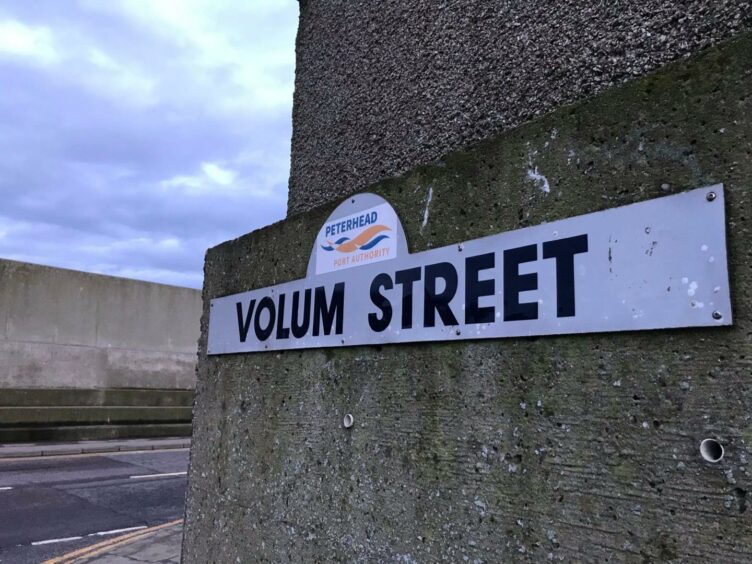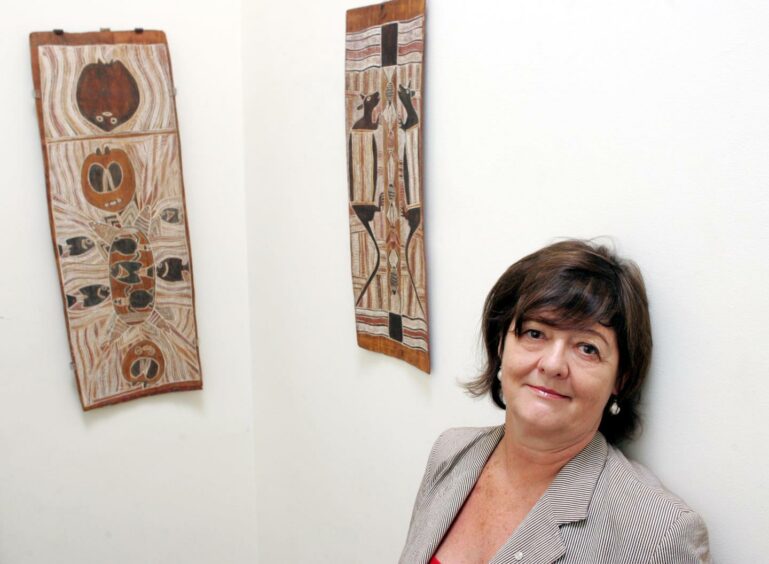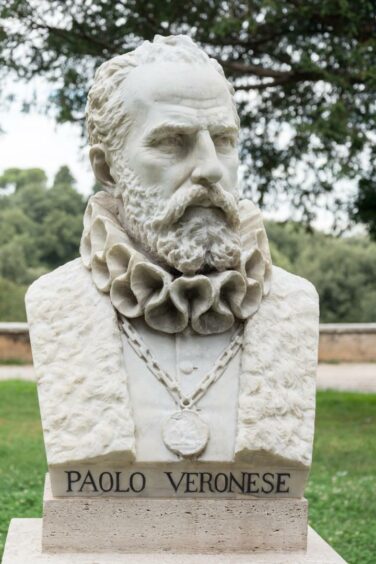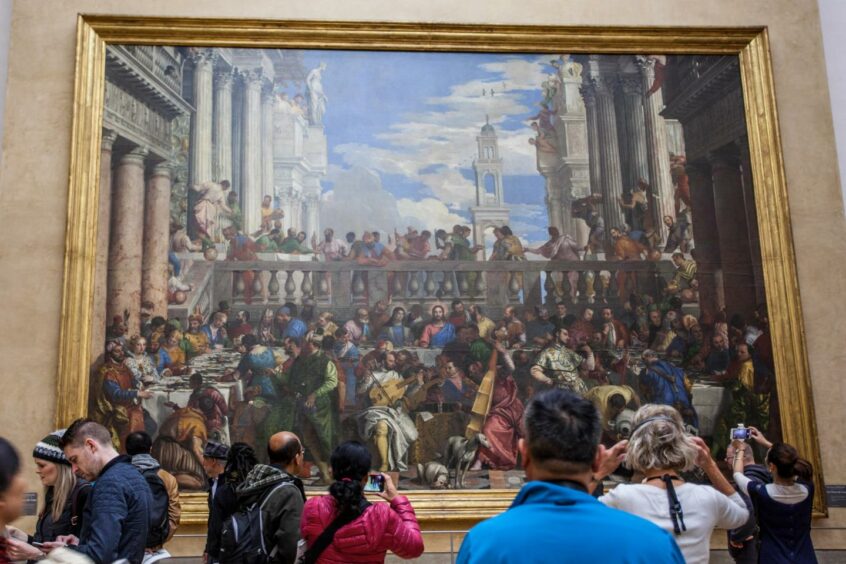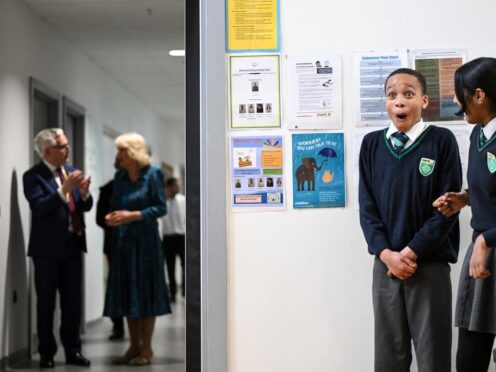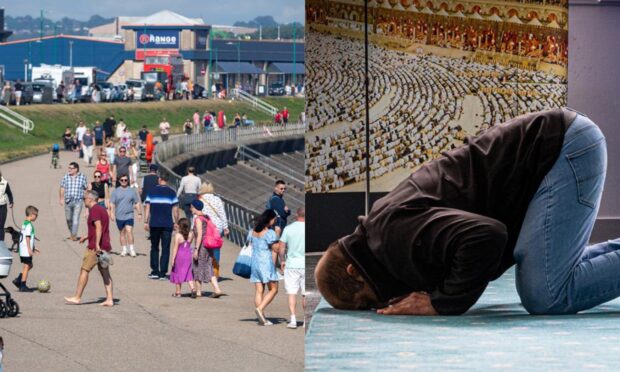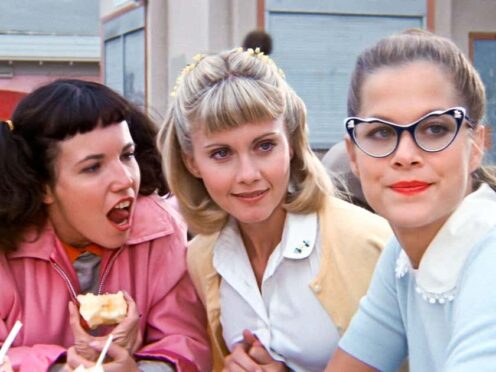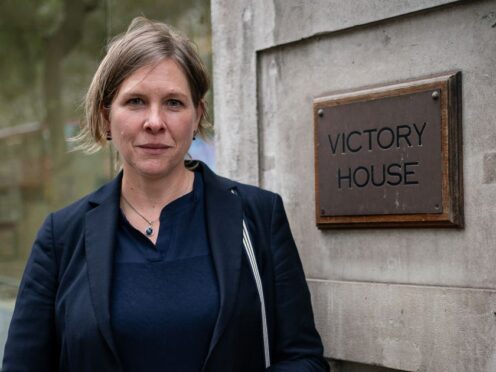It was painted in Venice in the 16th century and shown off on Catherine The Great’s Russian palace walls.
The Pool of Bethesda, a massive Italian artwork measuring 6ft by 12ft, has a storied history since being crafted by revered Renaissance master Paolo Veronese.
But today, nobody knows where the £13 million masterpiece is.
And remarkably, its last known home was Peterhead, where it hung for decades with seemingly nobody truly aware of its importance or value.
No-one even knows for sure when it was removed from the town’s Arbuthnot Museum.
In light of recent discoveries, art experts across the world are now trying to unravel the mystery of what happened to it.
Pool of Bethesda’s astonishing journey
Veronese’s 16th century masterpiece was first hung in the Palazzo Grassi in Venice.
It was there an engraving of it was made, the one likeness of the painting in existence.
It was then bought at a London auction by Catherine The Great, known for buying up whole collections of art to furnish her palaces.
As a “special mark of her esteem”, the Russian empress later gave it to Alexander Baxter, the Russia consul-general in London.
Baxter would become Aberdeen University’s rector and it’s thought he kept the painting on his estate near the city.
It was offered for sale by an art dealer in Edinburgh in 1860, and acquired by Aberdeen-based landscape and animal painter James Giles.
Eventually, it was taken to Australia by its next owner, Robert Black, when he emigrated from Newburgh.
Painting developed following in Australia
The Pool of Bethesda came to prominence down under in the late 19th century while Black exhibited it at the Melbourne Athenaeum.
It proved so popular that local luminaries launched a petition to purchase it, but that fell flat and it’s thought the Veronese was eventually given away as a prestigious raffle prize.
Experts at the University of Melbourne recently started investigating its whereabouts, but for them that was where the trail grew cold.
In January, they issued an appeal – suspecting it could be in a private collection somewhere in Australia.
Mystery of missing Pool of Bethesda painting takes a twist
Enter Peterhead history buff Fiona Riddell.
Fiona worked as a curator at the Arbuthnot Museum for decades and was able to put the gobsmacked Aussie arthounds in the picture.
It transpires that the painting was shipped from Melbourne to the Blue Toon in 1882, by north-east native James Volum.
Whether he won it in the raffle or bought it remains unclear.
But what’s certain is that Volum, a wealthy brewer in Geelong and a religious philanthropist, wanted to gift it to his hometown.
The painting weighed a tonne, and it would have taken some effort to cart it up the stairs into the gallery.
And into the 1900s it was hanging on the wall of Arbuthnot Museum for the deeply religious people of Peterhead to enjoy.
One clue as to its value was the £2,000 spent on insurance for the journey – more than £260,000 today.
But it appears that nobody in the town had any real idea of its cultural importance – nor of its potential price-tag.
And although Fiona has been able to shed some light on its history, she remains baffled about what happened to it.
After decades in the dark, and with this renewed push for information, could the tantalising mystery finally be solved?
Our map shows the painting’s journey over the years:
‘My heart nearly jumped out my mouth!’
Fiona Riddell couldn’t believe what she was seeing as she browsed the internet one lazy Saturday afternoon last month.
After years of fruitless efforts, what she found left her gaping at the screen in disbelief.
When Fiona saw the University of Melbourne appealing for information on the Italian masterpiece, she says “heart nearly jumped out her mouth”.
The mum’s quest for information on it began more than a decade ago.
The Pool of Bethesda was removed from Arbuthnot Museum long before Fiona arrived.
And a photograph showing a corner of the frame was her only clue to how it looked, until last month.
Even her predecessor, who had been there for 30 years, “knew nothing about it”.
It was when looking into the life of Volum for a whaling exhibition in 2009 that his gift to the museum came up.
Fiona recalls: “The more I looked into it back then, the more I was wondering ‘where is this painting?’
“The only thing I can think is that perhaps it was moved when the local council became the regional council in the 1960s… That would seem to fit.
“But it’s not in the collection as far as anybody is aware.
“I raised it a few times over the years but now people are trying everything to look for it.”
The historian added: “Nobody knew what they had, at no point in any of my research has monetary value even been mentioned.
“I’ve been looking for this painting for about 15 years, never even knowing who it was by. And I didn’t even know what it looked like until last month!
“It feels like the Australian researchers had the beginning of the story, and I had the middle, now we just need the ending.”
How can we be sure it’s a genuine Veronese?
The painting was verified by several experts in 1877 when the possibility of it being sold in Melbourne arose.
Eugene Von Guerard from the Melbourne Public Library and National Gallery had “no doubt whatsoever” it was “a genuine work of Paolo Veronese”.
London expert George Peacock said it was “undoubtedly” the real deal.
An article in the Buchan Observer in 1884 describes it in great detail, helping to confirm it was indeed the Veronese which was sent to Peterhead.
After outlining the religious scene, the reporter adds: “Like many master productions, the effect grows upon the observer each visit he pays.”
Who are the Australian art detectives leading the hunt?
Jaynie Anderson joins the Press and Journal for a chat from her living room in Australia, still slightly dumbfounded that the trail led to Peterhead.
The Professor Emeritus at the University of Melbourne is an art historian, curator and biographer.
Jaynie insists it is “possible” that the missing masterpiece could be found but acknowledges that “it’s a long shot”.
The academic became fixated with the Veronese piece when minutes from an 1877 meeting of the trustees of the National Gallery of Victoria were unearthed.
She imagined it might have been hanging in a home somewhere in Melbourne, so was stunned when she received an e-mail from Fiona days after posting an appeal online.
Prof Anderson said: “This all came about when we found that 108 people petitioned the National Victoria Gallery to buy a Veronese in 1877.
“We knew it ended up with this lottery to get it, but nothing after that until Fiona Riddell got in touch.
“We e-mailed and it quickly became clear it was the same painting, I am still amazed.
“Volum was a religious man, and it made sense he would give it to his hometown two years before he died.”
Can lost Pool of Bethesda painting really be found?
The art detective added: “It isn’t impossible that it could be discovered…
“I have carried out a research project with the Catholic church here and we have found various valuable paintings. It does happen.
“It would really be fantastic if we can get it, I find it enthralling.
“From the engraving we know it’s a very beautiful painting – and it’s huge, it’s a whopper!
“So where is it?”
What would happen if painting was uncovered?
Prof Anderson’s ancestors come from Shetland, and she would relish the chance to visit Scotland if the Pool of Bethesda painting is found.
She speculates it could have come into the possession of a church, civic building or private owner.
If discovered, it would be taken to a laboratory to be analysed and conservation work would be performed where necessary.
Of course, with so little known, researchers can’t rule out that it was destroyed.
Aberdeenshire Council described the hunt as a “puzzle of international significance”.
A spokeswoman said: “The records which we have (and those which exist) from that time are being interrogated.
“We are doing our bit, and ask anyone with information or memories of this piece to get in touch.”
Who was Paolo Veronese?
The Venice-based Italian renaissance painter was known for his large works depicting religion and mythology.
Veronese is thought to have inspired subsequent large scale ceiling and mural paintings in Venice and elsewhere.
His work is today shown in The Louvre, the National Gallery in London and various other palaces of culture.
Prof Anderson calls Veronese “one of the three great Venetian painters of the 16th century”, praising him as a “wonderful technician” and “great theatrical artist”.
Can you help pinpoint Pool of Bethesda painting?
Veronese is known to have painted Christ’s miracle at the Pool of Bethesda, based on an engraving of the masterpiece by Pietro Monaco in 1743.
The image comes from a New Testament account of Jesus healing a paralysed man in Jerusalem.
Perhaps it’s appropriate that the painting missing from the Arbuthnot Museum depicts a miracle, as many might think tracking it down will require some divine intervention.
But the experts delving into the past are determined not to stop until they can answer this century-old riddle.
A determined Prof Anderson told us: “It’s a long shot that we will find it, but it really is worth trying…”
If anyone has information on the painting, please contact ben.hendry@ajl.co.uk and it will be passed on.
